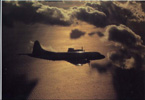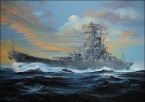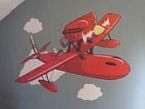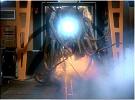ChezDaJez
Posts: 3436
Joined: 11/12/2004
From: Chehalis, WA
Status: offline

|
quote:
ORIGINAL: herwin
quote:
ORIGINAL: TheElf
quote:
ORIGINAL: herwin
quote:
ORIGINAL: Terminus
When TheElf speaks about air combat, you should keep your mouth shut and your fingers off the keyboard, Herwin. He knows more about this subject than you know about anything.
Would you mind laying off the ad hominem attacks? I wasn't challenging TheElf on his discussion of air combat, although I disagree on a number of points, particularly the question of long distance target acquisition. I can refer you to Erwin, H., Wilson, W., and C. F. Moss, 2001, "A computational sensorimotor model of bat echolocation." Journal of the Acoustic Society of America. 110 (2):1176-1187, Aug. 2001, and Erwin, H. R., 2004, "Algorithms for Sonar Tracking in Biomimetic Robotics," presented at RASC-04, November 2004. I suspect you might not credit the relevance of that work to fighter combat, but I used aerodynamic models derived from my professional military work to understand the processes by which bats control their flight to capture targets. Bats use energy tactics, but they can viff, so the best analog turned out to be the Harrier. Interestingly, one of my colleagues had been the USMC Harrier project manager.
My last flight in the Superhornet was a dedicated 1 v 1 against a British Harrier RN Pilot flying the AV-8B. I clubbed him like a baby seal. I don't know what the H3LL a Viff is but I can tell you that 2 General Electric F414-GE-400 turbofans and unlimited alpha don't give a flying F... about it...when we came in to land I lead him in to the break and I landed while he entertained the friends and family that gathered. The hovering thing is pretty cool I guess...if you're into that.
Viff is "vector in forward flight". Don't try to dogfight with a Harrier. They can fly backwards.
OK, now that I've got your attention, I have several issues with your analysis:
1. Long range visual target detection and identification is hard. There were a number of OR studies of this in WWII, and the detection probabilities were very unexpectedly low. Identifying aircraft silhouetted against the sky when out of audible range turned out to be a very hard sensory task.
2. Long range visual target detection and identification in clutter is a lot harder than that. These people didn't have radar. Bats have to use specialised CW waveforms for this task. Too much altitude, and you were looking down at aircraft in serious ground clutter. (I get paid to study this problem for the auditory system.)
3. We're talking about 1940s aircraft--their terminal velocity in a dive wasn't that fast. Dive bombers used a 5000 foot dive (plus or minus). A three mile dive was overkill--a waste of energy.
4. You lose most of your manoeuvrability and control at high speed--these aircraft had muscle-powered controls. I did an interesting study of bats trying to capture moths using dives. The moths have to time their dive to the side out of the bat's flight path very carefully. Too soon and they gained too much velocity, couldn't manoeuvre, and the bat would chase them down. Too late and they were dinner. P = mva. In a fast dive with fixed power, you don't have very much acceleration capability.
The details were different from modern air combat, and they matter to the tactics.
Hi Herwin,
One of the things I learned early on in my naval career was that there is a huge difference between book knowledge (i.e. theory) and experience. I have found that experience will nearly always trump knowledge. I do not mean this in a disparaging way but theory has a nasty habit of not living up to reality. "It should work this way" does not always equal "This is the way it works.
Anyone studying air combat from the ground without experiencing it really doesn't have the full breadth of experience to truely apply the lessons learned. Studying the aerodynamic capabilities and targeting habits of bats and other such critters does not make someone an subject matter expert in aerial combat. I recognize that such studies can be important but I am also a firm believer that only the person that has sat in the seat with an enemy on his six or at his twelve knows the true reality. It's similar to someone who has studied horse racing trying to teach another how best to drive a Formula 1 race car from the confines of their office when neither has any experience. The number of lessons that can be applied are few but they sound great.
When I was trained to operate airborne active and passive sonar systems by experienced professionals, everything seemed so "black and white" but the reality was that the entire subject sported many, many shades of gray. There was no way a newbie fresh out of school was going to be able hunt submarines effectively despite having the best book knowledge and training available. I had the theory but it took years of experience to become effective. Now imagine if I had been taught by someone who had never flown the seat and how much steeper a learning curve that would be.
Again, this is not to disparage the world of academics. Indeed, sometimes an academist finds a solution simply because he wasn't confined by RL experiences. Theory and experience are both needed. But when I need someone on the field of battle, I want someone who has been there and done that.
Cheers,
Chez
_____________________________
Ret Navy AWCS (1972-1998)
VP-5, Jacksonville, Fl 1973-78
ASW Ops Center, Rota, Spain 1978-81
VP-40, Mt View, Ca 1981-87
Patrol Wing 10, Mt View, CA 1987-90
ASW Ops Center, Adak, Ak 1990-92
NRD Seattle 1992-96
VP-46, Whidbey Isl, Wa 1996-98
|
 Printable Version
Printable Version
















 ) or just plain not able to see the enemey at lower levels. But right now smart players go high and smart opponents go high as a counter.
) or just plain not able to see the enemey at lower levels. But right now smart players go high and smart opponents go high as a counter.


 New Messages
New Messages No New Messages
No New Messages Hot Topic w/ New Messages
Hot Topic w/ New Messages Hot Topic w/o New Messages
Hot Topic w/o New Messages Locked w/ New Messages
Locked w/ New Messages Locked w/o New Messages
Locked w/o New Messages Post New Thread
Post New Thread